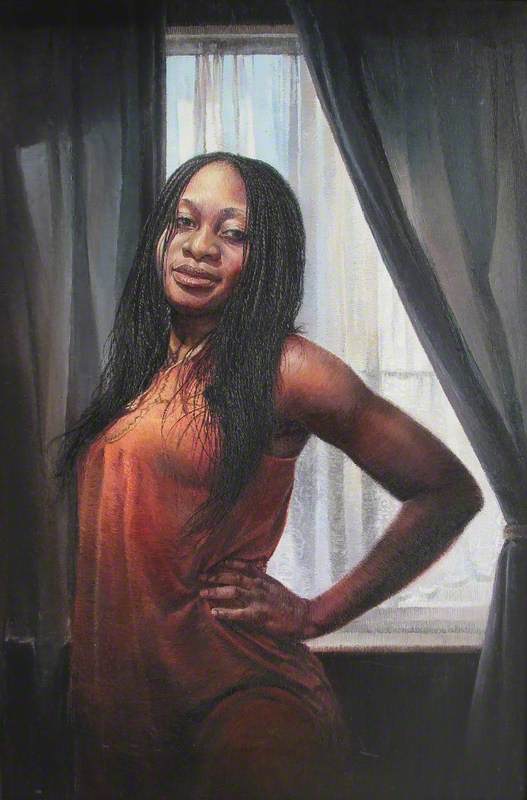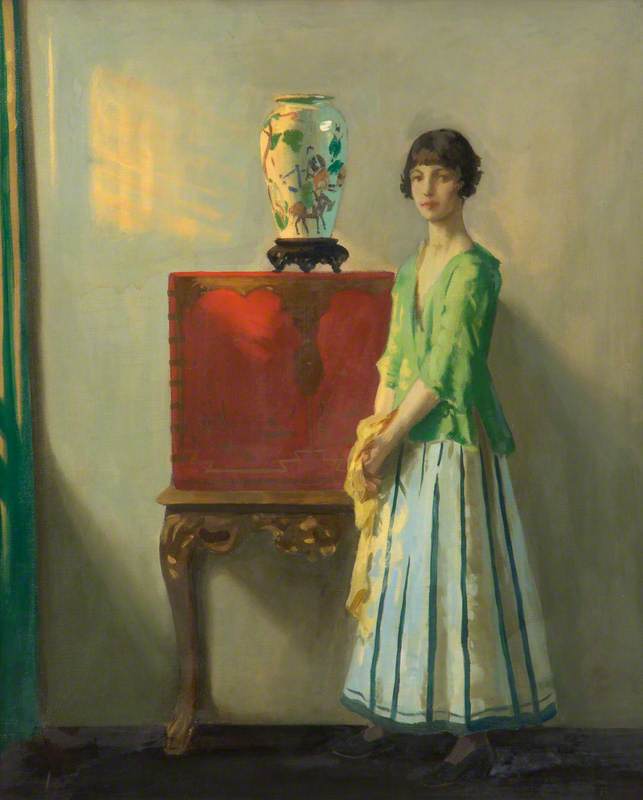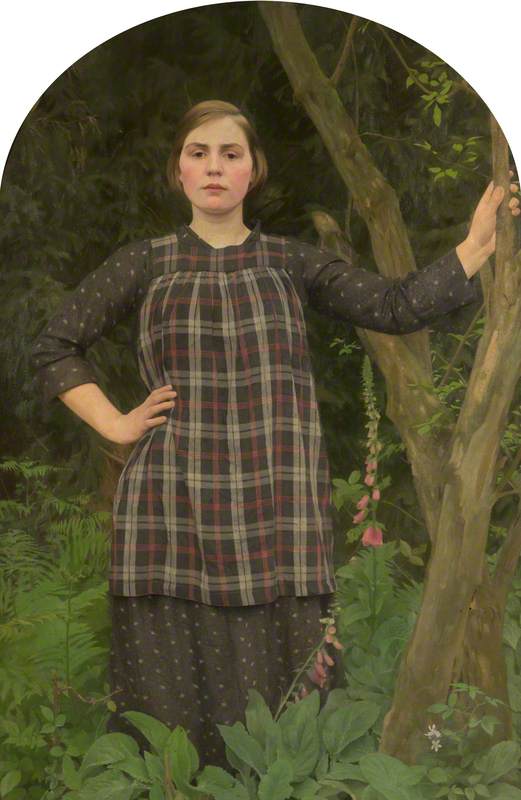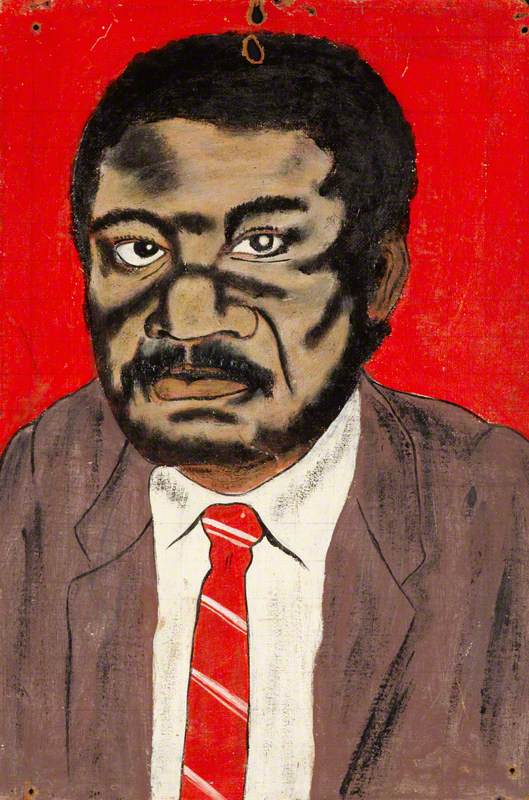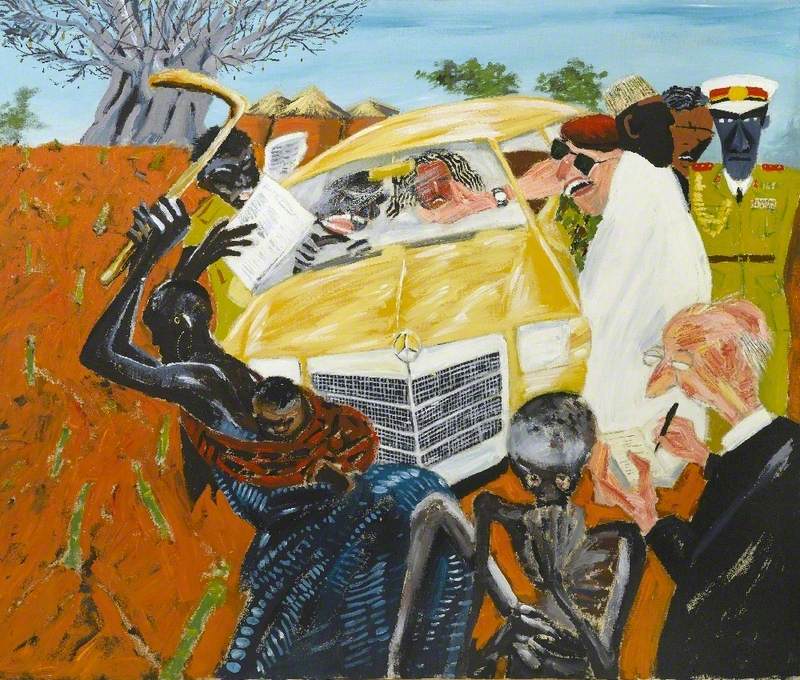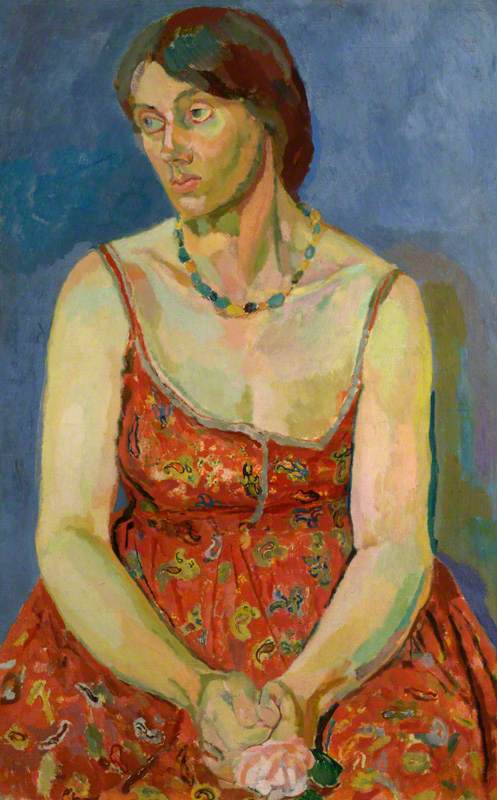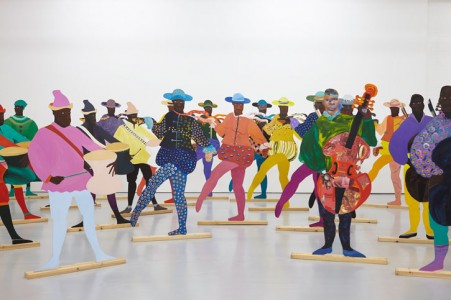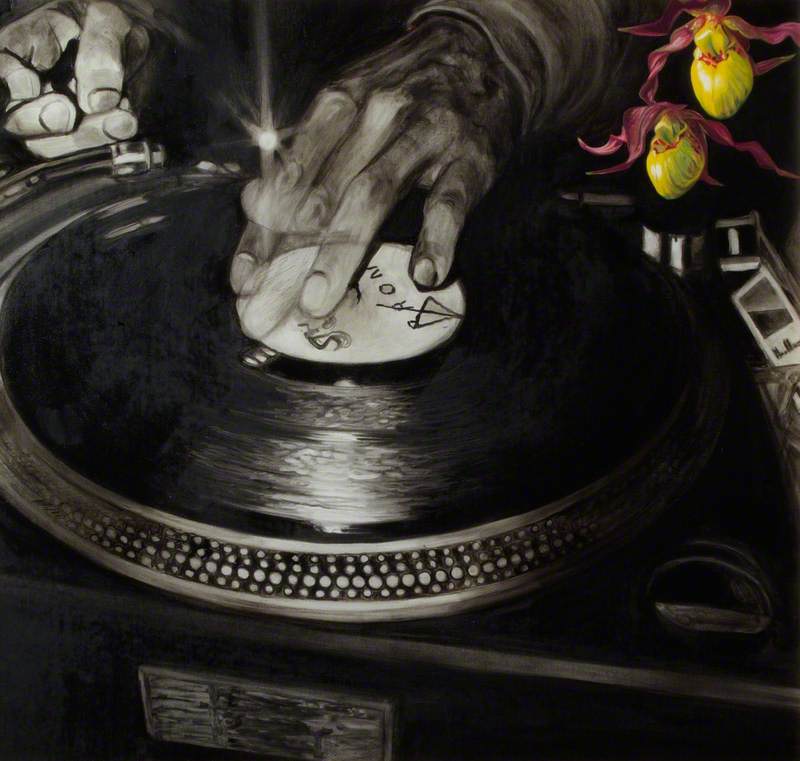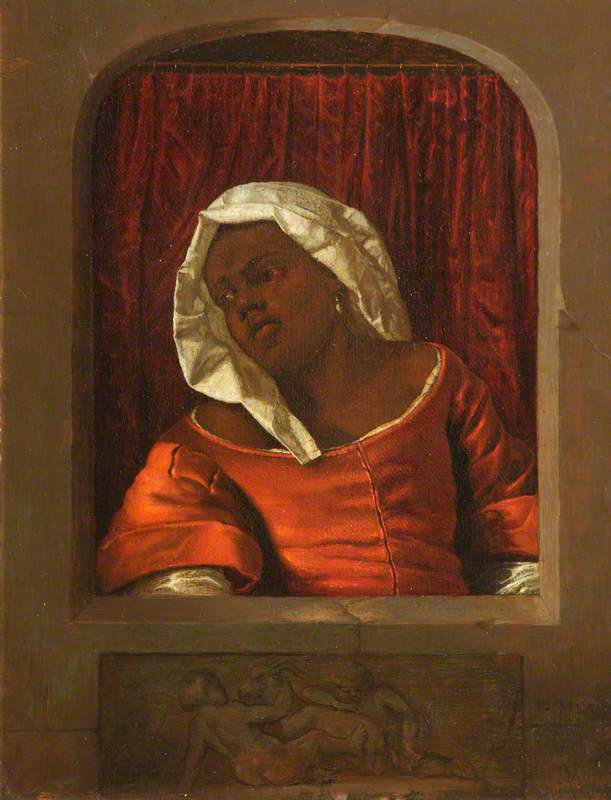Gallery Oldham has recently added to Art UK the newly acquired portrait Damilola by Titus Agbara. It was bought at the end of 2017 with the generous support of Art Fund.
Titus Agbara is a Nigerian-born artist who moved to the UK in 2007, and then to Oldham in 2016. The portrait Damilola was one of two paintings he submitted to the Oldham Open, which is Oldham's biannual open call exhibition. Both pieces were accepted and on the opening night the curatorial team decided that we should try to obtain funding to add Damilola to Oldham's collection. Oldham's collection was founded in the Victorian period, and contains work by notable nineteenth century artists including Waterhouse, Turner, Millais, and many more. Contemporary collecting continued through the twentieth century, seeing the addition of work by Hodgkin, Auerbach and Lowry to name a few. We collect contemporary art today, with recent additions to the collection by Lubaina Himid, Kerry Jameson and Imran Qureshi.
Damilola was able to provide both information and home-cooked Nigerian food. Her name is the Yoruba word for 'prosperity', which Agbara saw (and still sees) as a good omen for his new life.
There is plenty written about the perennial problem of the representation of women in historical collections – which were assembled by men, and contain paintings made exclusively made by men, for men to look at. Many of the women in Oldham's collection are treated as decorative objects alongside other decorative objects – for example, The Red Lacquer Cabinet – or have no name and are described as someone's daughter, mother or wife.
There are exceptions, of course – Allan Beeton's Girl in a Wood shows a real young woman, with dirt under her fingernails and a gaze which clearly tells the viewer that she isn't an object who is merely there for your entertainment. The 'girl' still has no name, and is presumably a symbol of the wholesome country life idealised by the metropolitan art elite, but let's leave that to one side for now! Damilola will work well with this painting, and there are plans to show the two together in the future. Damilola is similarly robust – she meets the gaze in much the same way as the 'girl', and seems comfortable in her skin and with our scrutiny.
And what of Damilola herself? Agbara met her in London in 2007, fairly soon after arriving in the UK. During this period Agbara was trying to learn about the customs and systems of a new country. Damilola was able to provide both information and home-cooked Nigerian food. Her name is the Yoruba word for 'prosperity', which Agbara saw (and still sees) as a good omen for his new life. She agreed to model for him, and Agbara took photos in a variety of poses before returning to his bedroom-studio to work on the painting. The composition is based the photos Agbara took and the background from Agbara’s bedroom-studio in his former flat in London.
It's hard to see from this image, but the paint surface is heavily textured. The paint layer is thick and is built up using a palette knife. He describes his aim being to 'represent things in a truthful manner' but the term photorealistic doesn’t seem to quite describe his style. The paint layer and tones add a real depth to the painting.
Titus Agbara was born in 1974 in Lagos. He studied art at the School of Art and Design, Federal Polytechnic in Auchi, Nigeria. He worked full-time as an artist before moving to the UK in 2007. He now combines his career as an artist with a role as a care assistant.
Agbara's work is in the National Museum Lagos, Nigeria, but this is the first time a European museum has acquired his work. He has taken part in Sky Arts Portait Artist of the Year 2014 and Sky Arts Landscape Artist of the Year 2015 and 2016. He describes his main interest as being landscape and the everyday. He often paints in oils, but also watercolour and pastels.
Damilola will be on display in 'Oldham Stories' at Gallery Oldham until the end of 2018.
Rebecca Hill, Exhibitions and Collections Curator (Art), Gallery Oldham
